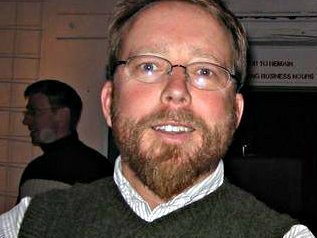The White House’s health reform plan is supposed to take the burdenoff of emergency rooms. Most people will have health insurance and seetheir own doctor, rather than waiting until they are so sick they needvery expensive ER care. That’s the theory, anyway.
A Colorado ERdoctor takes issue with the theory, though. In research published in amedical journal today, he says the federal health care law is going tomake emergency rooms more crowded, not less.
CPR HEALTH REPORTER ERIC WHITNEY: The University of Colorado’s Dr. Adit Ginde saysThe Affordable Care Act passed last year may require nearly allAmericans to have health insurance starting in 2014, but he says thatdoesn’t mean they won’t wind up in emergency rooms when a regular doctorvisit would do.
CU SCHOOL OF MEDICINE PROFESSOR DR. ADIT GINDE : People may have insurance, and may have primary caredoctors, but they may have trouble accessing those primary careservices.
WHITNEY: Ginde often sees people in the emergency roomwho have insurance and a regular doctor, and they tell him theirdoctors are really busy. Sometimes they can't get an appointment for twoweeks or more. So if someone with heart disease is having chest pains,they either go to the ER on their own, or are are told to go there bytheir overbooked doctor's office.
GINDE: You know, in the presssometimes, patients themselves are blamed for, quote, inappropriateutilization of the emergency department, but a lot of patients areactually trying to get into their primary care offices, and just can't.
WHITNEY:Ginde has looked beyond his personal experience. He’s a CU medical schoolprofessor, and co-authored a study being published today that he saysconfirms his conclusions. Ginde looked at a big national sample of ERpatients, and found that, over the last 10 years, more of them arereporting more barriers to an appointment with their family doctors.Barriers often boil down to primary care doctors just being too busy. Hesays that contributed to roughly a 20% jump in ER use over the sameperiod.
The root of the problem, Dr. Ginde says, is that there simply aren't enough primary care providers.
GINDE: Its important to increase the primary care supply, increase the availability of primary care.
WHITNEY:That means training more primary care doctors, but also using moremid-level providers, like nurse practitioners and physician assistants,Ginde says. It’s especially important with millions more Americansgetting health coverage in 2014.
But others disagree with Dr. Ginde's conclusion that the federal health law will mean more crowding in ERs.
GOVERNOR'SSENIOR HEALTH POLICY ANALYST LOREZ MEINHOLD: I think it's not lookingat all the different parts of the Affordable Care Act.
WHITNEY:Lorez Meinhold, one of Governor Hickenlooper's top health advisers, is abig supporter of the Affordable Care Act. She says its architects tookmeasures to address the shortage of primary care providers. Forinstance, the Affordable Care Act gave states grants to study theirhealth care workforce needs. Colorado got $150,000. And, Meinhold says,state policy makers are working on the problem, too.
MEINHOLD: Wepassed legislation in '09, '10 and '11 to address primary care providershortages. We've already, because of those changes, leveraged privatefunding, as well as some of the federal funding that's brought almost$15 million into the state, just in student loan repayment.
WHITNEY:That means Colorado has $15 million to lure new doctors and otherproviders to the places they're needed most. They get the money only ifthey do primary care in places where there's not enough.
Thestate will know more about whether it can meet the steep rise in demandfor health care projected in 2014 when it finishes its health care workforce study in a month or two.
Jeff Bontrager, at the non-partisan Colorado Health Institute says there's still time to take more action if necessary.
COLORADOHEALTH INSTITUTE RESEARCHER JEFF: BONTRAGER: We are at point where wecan take a look at what might be the increased demand among thenewly-insured and how the use of health care is going to increase, orthe demand for primary care services is going to increase.
WHITNEY:Whether Colorado’s emergency rooms get even busier in 2014 or not, bothsides agree that the state needs a lot more primary care doctors andnurses on the job between now and then.
[Photo: CPR/Eric Whitney]








